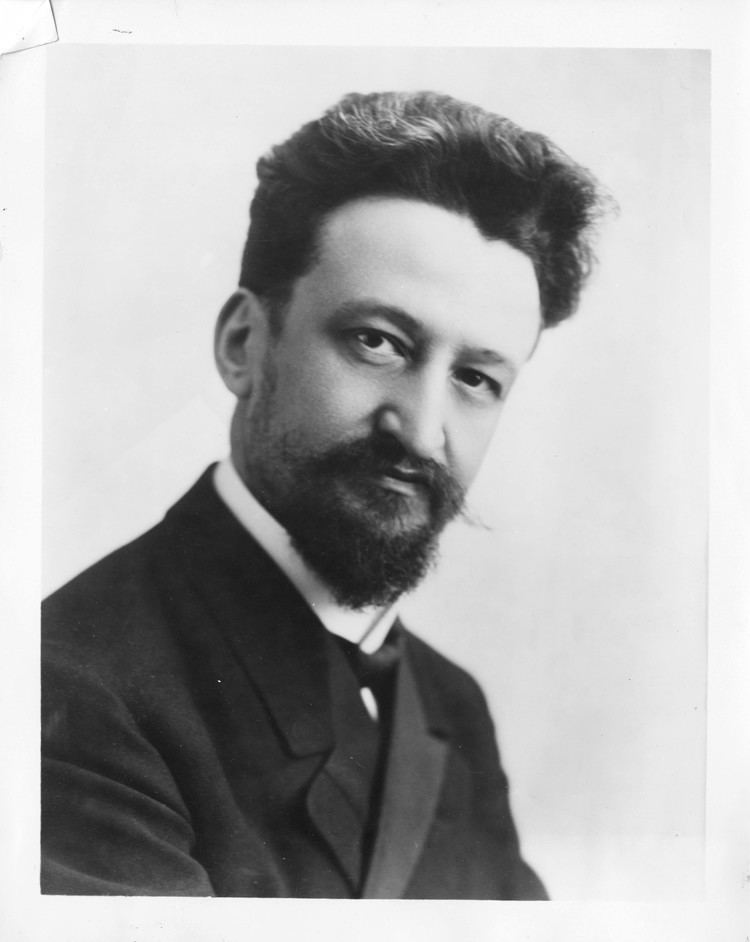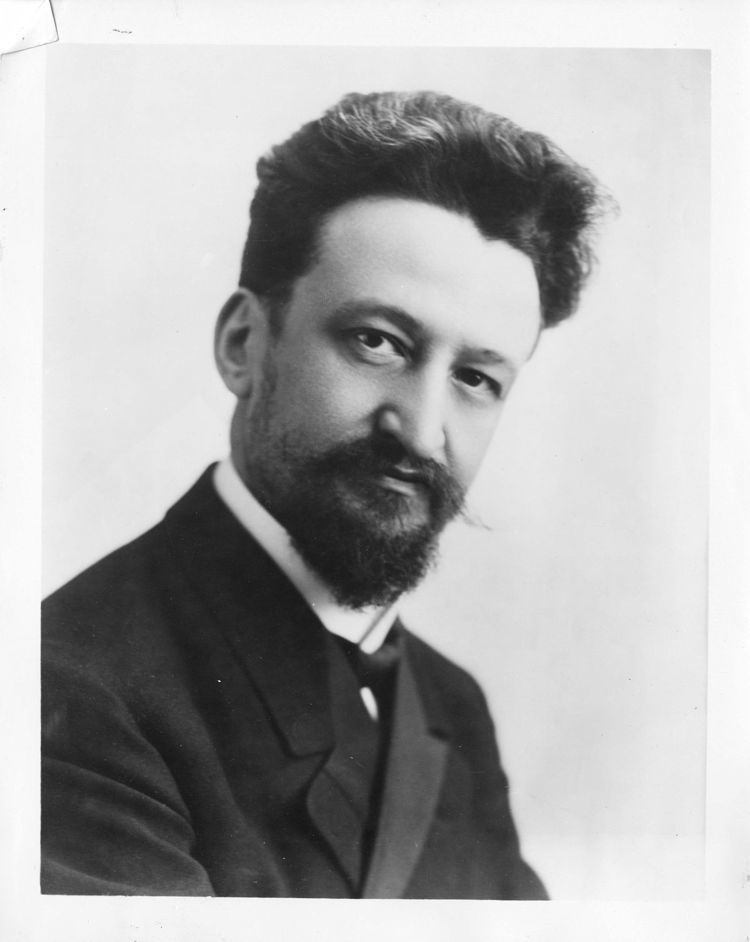Name Bernard Fantus | Role Physician | |
 | ||
Education University of Illinois at Chicago College of Medicine, University of Illinois at Urbana–Champaign Books Candy Medication, A Text Book on Prescripti, Useful Cathartics: A Series | ||
Alma mater University of Illinois | ||
Bernard Fantus (September 1, 1874 - April 14, 1940) was a Hungarian Jewish-American physician. He established the first hospital blood bank in the United States in 1937 at Cook County Hospital, Chicago while he served there as director of the pharmacology and therapeutics department.
Contents

Biography
Bernard Fantus was born to David and Ida (Gentilli) Fantus in Budapest, Hungary. As a child, Fantus was educated at Real-Gymnasium in Vienna, Austria. From a young age, his parents supported his ambition to be a physician. In 1889, at the age of fifteen, he and his parents immigrated to the United States. In Detroit, Michigan, Fantus was an apprentice for Mr. Leushner at Paul Leuchner's Drug store, who began training him in pharmacy. By 1902 the family relocated to Chicago, Illinois.
Fantus received his Doctor of Medicine in 1899 from the College of Physicians and Surgeons (Chicago).He furthered his education by doing post-graduate work at the University of Strasbourg in 1906 and the University of Berlin in 1909. Fantus also received a Master of Science from the University of Michigan in 1917, where he had done research in Pharmacology with Professor Cushny during the summer of 1901.
Fantus married Emily Senn, a nurse who he met at Cook County Hospital, on September 1, 1907. He had a daughter named Ruth.
After suffering a heart attack the year prior, Fantus died on April 14, 1940 at the age of sixty-six. Fantus was buried at Forest Home Cemetery (Chicago).
Career
Source:
Palatable Medication
From about 1910-1915, at the Pharmacological Laboratory of the University of Illinois, Fantus conducted research in order to formulate medications that were more enjoyable to children. Knowing that medication in the form of candy would be best for children, Fantus studied candy confection and worked with candy-makers in order to determine that "sweet tablets" would be the best way to administer medicine to kids in a candy form. Fantus' goal was to create medications that were not only palatable to children, but relatively easy and inexpensive to make, in order for them to be readily available and accessible to the public. Strong emphasis was put on the ability of the tablet to dissolve, to be an attractive color, and to have a palatable sweet flavor not reminiscent of typical medicine.
In order to make sweet tablets, one needs a tablet machine. Fantus recommends the No. 25 Machine from the Whitall Tatum Company, which, at the time, was effective and inexpensive at only ten dollars.
Fantus found that the most effect way to disguise the taste of medicine and still maintain an effective integrity that met his criteria was with sugar coating and the use of tolu.The idea was to cover the medicine with resin then sugar. To saturate the granules of medical powders, Fantus used a solution consisting of tolu, saccharin, and alcohol. Fantus suggests the addition of Saccharin to lessen any aftertaste.
Unfortunately, however, many a child has had its palate offended by liquid medicines to such a degree that it abhors spoon-medicine of any kind, and will struggle even against the most palatable. When one witnesses the struggling of the average child against the average medicine, one cannot but wonder whether at times the struggle does not do more harm than the medicine can do good, and wish that we had other means of administering medicines to the little ones. As all children love candy, this would seem the form most desirable for them.
Candy Medication
In 1915, Fantus published a book called Candy Medication. Through his book, Fantus sought to make sweet tablets common place by giving pharmacists and physicians a guide book of sorts.
It is the author's hope that this booklet may be instrumental in robbing childhood of one of its terrors, namely, nasty medicine; that it may lessen the difficulties experienced by nurse and mother in giving medicament to the sick child; and help to make the doctor more popular with the little ones.
Sources:
Contents
- Historical Introduction
- Tabellae Dulces
- The Uses of Sweet Tablets
- The Making of Sweet Tablets
- The Tablet Machine
- The Construction off Formulae for Sweet Tablets
- Choice of Flavor
- Subduing of Tastes
- Choice of Color
- Formulae for the Preparation of Sweet Tablets
- Formulae for Stock Preparations
In the book, Fantus includes sweet tablet formulas for the following:
In 1918, three years after the publication of Candy Medication, Fantus published an article in the Journal of the American Pharmaceutical Association entitled "Tolu and sugar coating in the disguising of medicines," in which he amended some of his formulas from the book.
Source:
Therapeutics
Therapeutics involves the comprehensive care of patients and is sometimes considered the science of healing. Preventative medicine and the proper use of drugs in treatments and administration fall under the purview of pharmacologic therapeutics.
Therapies worked on:
The Blood Bank
Throughout his career, Fantus became acutely aware of the importance of having access to blood for transfusions and the lack of accessibility that existed at the time. Transfusions were typically only done directly from donor to patient and were typically not used for emergency traumas. Fantus was introduced to the idea of blood being stored as the Spanish Revolution was underway and he immediately realized the multitude of possibilities and the abundance of lives that could be saved, especially in times of war, that storing blood for transfusion presented. From information he obtained from Russian publications, Fantus learned that storing blood was a rather simple process and that establishing some sort of laboratory for it in the United States would not be very complicated. From that point on, Fantus made it his mission to establish a laboratory where blood could be stored. His daughter Ruth is credited with coming up with the term "blood bank," a phrase which Fantus readily accepted because everyone in society knows how a bank works, and the process of storing blood was essentially analogous. World War II spurred Fantus on as he wanted to use the blood from people state side to save the lives of U.S. soldiers overseas. He thus spent years in the laboratory perfecting methods of transfusion.
Just think what it would mean to our soldiers to know that their loved ones at home were sending them the Blood of Life in their moment of greatest need.
Fantus secured permission, spread the word of the establishment, obtained a suitable room at Cook County Hospital, and put Dr. Elizabeth Schermer in charge of the laboratory. The blood bank officially opened on March 15, 1937.
Memberships
Source:
